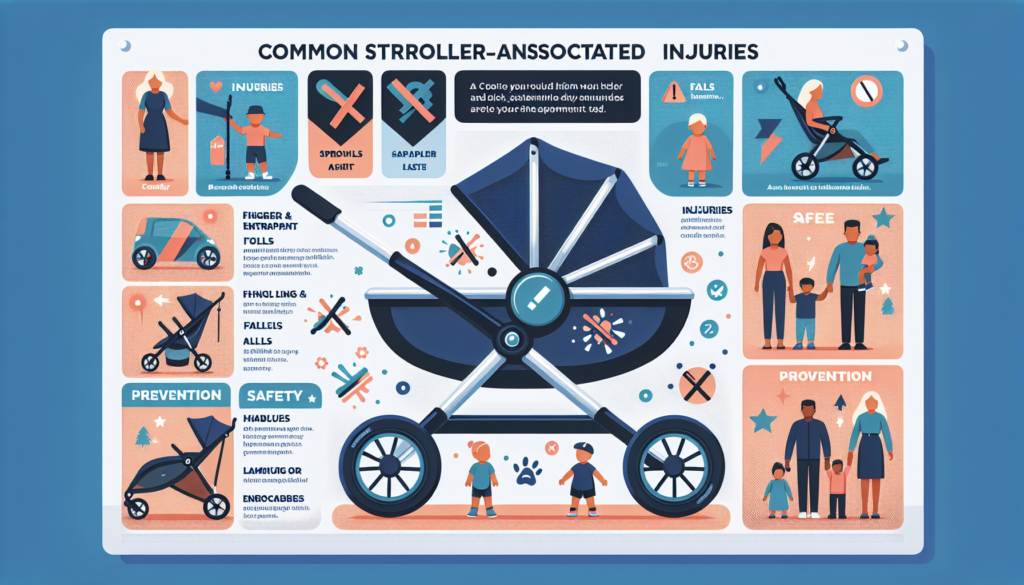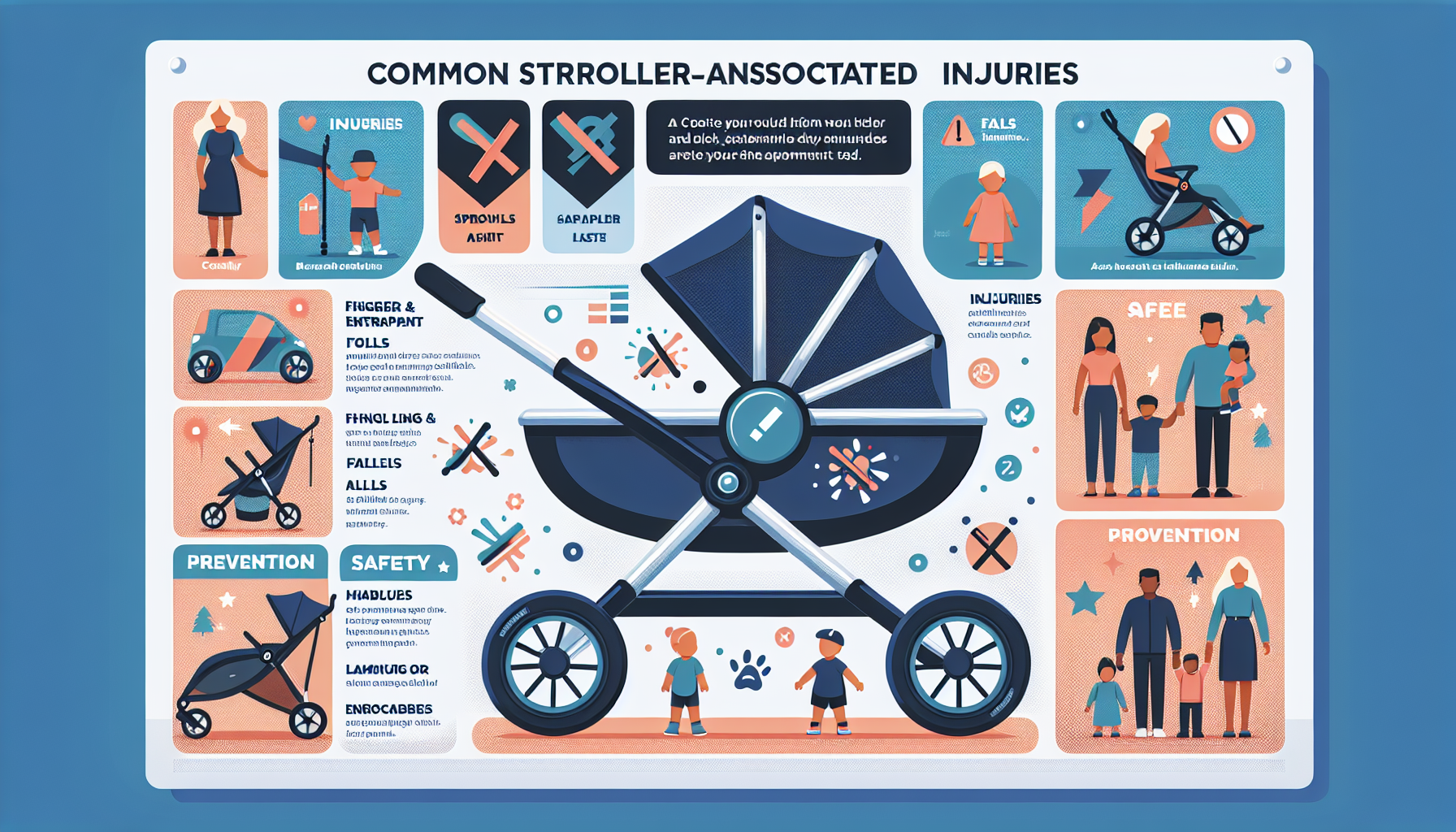Imagine strolling through the park, enjoying the fresh air and sunshine, with your little one happily seated in their stroller. It’s a serene and peaceful scene, but have you ever stopped to think about the potential dangers that can lurk within the seemingly innocent confines of a stroller? In this article, we will explore the various injuries that can occur in strollers, from minor bumps and bruises to more serious accidents. So grab a cup of tea, sit back, and let’s shed some light on this often overlooked aspect of parenthood. Strollers are a convenient and popular way to transport infants and young children. They provide a safe and comfortable space for little ones to rest or enjoy a leisurely stroll. However, accidents can happen, and it is essential to be aware of the potential injuries that can occur while using a stroller. In this article, we will explore the various types of injuries that can happen while using a stroller, as well as the risk factors associated with these injuries. We will also provide useful tips and advice on how to prevent stroller-related injuries and discuss the legal considerations involved. So let’s dive in and learn more about the injuries in strollers.
Types of Injuries
Fall-related injuries
One common type of injury associated with strollers is fall-related injuries. Unfortunately, little ones can be quite curious and unsteady on their feet, which can lead to accidents and falls. Head injuries are a significant concern in these situations, as young children’s heads are particularly vulnerable. Fractures and sprains can also occur due to the impact of a fall. Bruises and cuts are other common fall-related injuries that may result from contact with the stroller or its surroundings.
Collisions and tip-overs
Collisions and tip-overs are another category of injuries that can happen when using a stroller. Accidents involving collisions with objects or other strollers can lead to impact injuries. Additionally, collisions can result in head and facial injuries, especially if the child’s head is not adequately protected. Lacerations and abrasions can occur due to the force of impact or sharp edges on the stroller or surrounding objects.
Finger and limb entrapment
Finger and limb entrapment can be a significant concern when it comes to stroller injuries. Finger entrapment can happen if a child’s fingers get caught between the moving parts of the stroller, such as the folding mechanism. Limb entrapment can occur if a child’s arm or leg becomes wedged in between the stroller’s frame or other components. These injuries can range from minor bruising to more severe damage, depending on the force and duration of the entrapment.
Inadequate restraint injuries
Inadequate restraint injuries typically occur when a child is not properly secured within the stroller. Strap-related injuries can happen if the harness or seat belt used to secure the child is defective, improperly fastened, or inadequate for the child’s size and weight. Out-of-position injuries may occur if the child manages to wiggle out of the restraint system or position themselves in a way that puts them at risk of injury.
Contact with moving parts
Contact with moving parts is another potential source of injuries in strollers. Wheel-related injuries can occur if a child’s foot or hand gets caught in the wheels while the stroller is in motion. These injuries can range from minor scrapes and bruises to more serious fractures or amputations. Folding mechanism injuries can happen if a child’s finger, hand, or limb gets accidentally trapped in the folding mechanism while collapsing or unfolding the stroller.
Risk Factors
To better understand the injuries in strollers, it is essential to consider the risk factors associated with these incidents. Here are a few factors that can contribute to a higher likelihood of stroller-related injuries:
Improper usage
One of the most significant risk factors is the improper usage of strollers. If parents or caregivers do not understand how to operate the stroller correctly, it increases the chances of accidents and injuries. It is crucial to read the instruction manual and familiarize oneself with the specific features and functions of the stroller before using it.
Age and developmental factors
The age and developmental stage of the child can also play a role in stroller injuries. Younger children who are still learning to sit up independently or have limited coordination may be at a higher risk of accidents. Additionally, older children who exceed the weight limit or attempt to climb in or out of the stroller unsupervised may be more prone to injuries.
Stroller design flaws
Some stroller models may have design flaws or defects that increase the risk of injuries. These design flaws could include sharp edges, inadequate safety mechanisms, or poorly constructed restraint systems. It is essential to research and select a stroller that meets safety standards and has positive reviews regarding its design and construction.
Product recalls
Product recalls are another significant risk factor to be aware of when using a stroller. Manufacturers occasionally discover defects or safety issues with certain stroller models and issue recalls to address these concerns. It is crucial to stay informed about any product recalls that may affect the stroller you are using and follow the manufacturer’s instructions for resolving the issue.

Prevention and Safety Tips
Now that we have discussed the various types of injuries and risk factors associated with strollers let’s explore some preventive measures and safety tips to ensure the well-being of your child. By following these guidelines, you can significantly reduce the risk of stroller-related injuries:
Proper seat belt and harness use
Always ensure that your child is securely fastened with the seat belt or harness provided by the stroller. Make sure the restraining device is appropriately adjusted to fit your child’s size and weight. Regularly inspect the seat belt or harness for signs of wear or damage and replace it if necessary.
Appropriate stroller selection
Choose a stroller that is suitable for your child’s age, weight, and developmental stage. Consider the stroller’s safety features, such as a sturdy frame, reliable braking system, and well-designed restraining mechanisms. Look for strollers that comply with safety standards and have positive reviews regarding their overall safety and durability.
Regular maintenance and inspection
Regularly inspect your stroller for any signs of wear and tear, loose parts, or sharp edges. Ensure that all moving parts, including wheels and folding mechanisms, are in proper working order. Regularly clean and lubricate the stroller as recommended by the manufacturer. By maintaining your stroller in good condition, you can help prevent accidents caused by mechanical failures or malfunctions.
Awareness of product recalls
Stay informed about any product recalls that may affect your stroller model. Sign up for notifications from the manufacturer or regularly check their website for updates. If a recall is issued, promptly follow the manufacturer’s instructions to address the safety concerns and ensure the necessary repairs or replacements are made.
Legal Considerations
In the unfortunate event that a stroller-related injury occurs, it is important to understand the legal considerations involved. Manufacturers have a responsibility to design and produce safe strollers that meet industry standards. If a defect in the stroller or negligence on the part of the manufacturer contributed to the injury, you may be entitled to file a personal injury claim. Consult with a legal professional experienced in product liability cases to discuss your options and determine the best course of action.
Conclusion
Strollers are a valuable tool for parents and caregivers, providing a convenient and comfortable way to transport young children. However, it is crucial to be aware of the potential injuries that can occur while using a stroller. Fall-related injuries, collisions and tip-overs, finger and limb entrapment, inadequate restraint injuries, and contact with moving parts are some of the common types of injuries associated with strollers. By understanding the risk factors, implementing preventive measures, and staying informed about product recalls, you can help safeguard your child’s well-being. Remember, proper usage, appropriate stroller selection, regular maintenance, and adherence to safety guidelines are key to preventing stroller-related injuries. Your child’s safety is always a top priority, so take the necessary steps to ensure their well-being while using a stroller.

